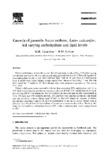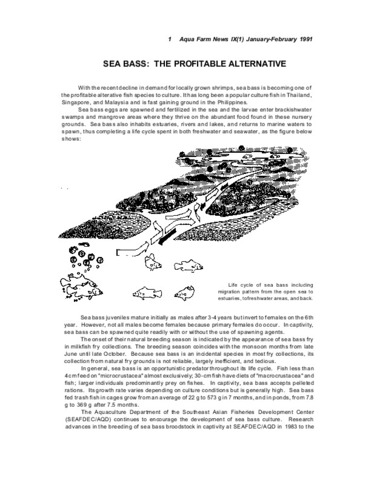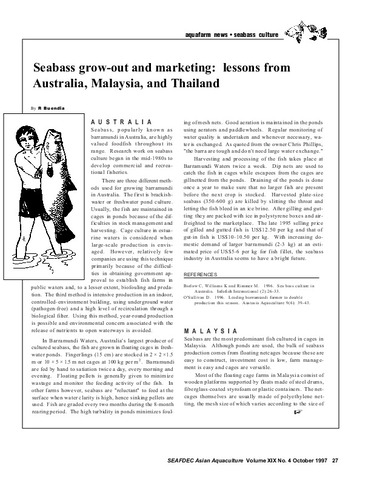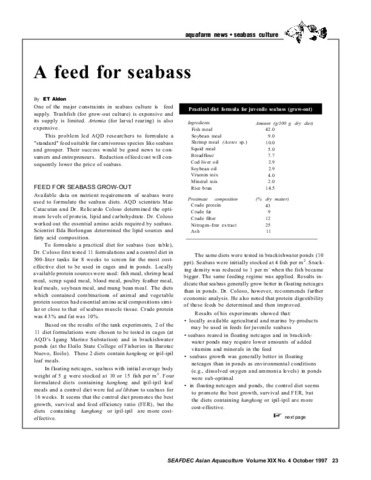Growth of juvenile Asian seabass, Lates calcarifer, fed varying carbohydrate and lipid levels
- Global styles
- MLA
- Vancouver
- Elsevier - Harvard
- APA
- Help

View/
Date
1997Page views
4,955ASFA keyword
AGROVOC keyword
Taxonomic term
Metadata
Show full item record
Share
Abstract
Growth performance of juvenile seabass (initial mean body weight, 0.90 ± 0.04 g) fed varying carbohydrate and lipid levels were determined using practical diets in a 2 × 3 factorial experiment. Two carbohydrate levels (15 and 20%) and three lipid levels (6, 12 and 18%) at a fixed protein level of 42.5% were tested. Dietary energy ranged from 284 to 412kcal 100g−1 diet. The fish were reared for 12 weeks in 601 flow-through tanks with aeration in seawater at 32%. and at 26.5–29 °C.
Higher weight gains were observed in fish fed diets containing 20% carbohydrate with 12 or 18% lipid. Lowest specific growth rate was observed in fish fed the 15% carbohydrate at 6% lipid. Survival was 100% in all treatments. The feed conversion ratios for fish fed 20% carbohydrate at 12 or 18% lipid, and 15% carbohydrate with 12% lipid were best. Specific growth rate and weight gain did not differ at lower dietary lipid (12-6% or 18-12%) despite an increase of dietary carbohydrate indicating a sparing of lipid by carbohydrate as an energy source. Dietary lipid at 18% (1:1 ratio of cod liver oil and soybean oil) seems to be excessive for seabass. Based on this study, we recommend a carbohydrate level of 20% in diets containing lipid levels ranging from 6 to 18%.
Suggested Citation
Catacutan, M. R., & Coloso, R. M. (1997). Growth of juvenile Asian seabass, Lates calcarifer, fed varying carbohydrate and lipid levels. Aquaculture , 149(1-2), 137-144. https://doi.org/10.1016/S0044-8486(96)01432-9
Type
ArticleISSN
0044-8486Collections
- Journal Articles [1258]
Related items
Showing items related by title, author, creator and subject.
-
Sea bass: The profitable alternative
Southeast Asian Fisheries Development Center, Aquaculture Department (Aquaculture Department, Southeast Asian Fisheries Development Center, 1991) -
Seabass grow-out and marketing: lessons from Australia, Malaysia, and Thailand
Buendia, Romeo (Aquaculture Department, Southeast Asian Fisheries Development Center, 1997) -
A feed for seabass
Aldon, E. T. (Aquaculture Department, Southeast Asian Fisheries Development Center, 1997)One of the major constraints in seabass (Lates calcarifer) culture is feed supply. Details are given of work conducted at AQD regarding the formulation of a 'standard' feed suitable for carnivorous species like the seabass ...





